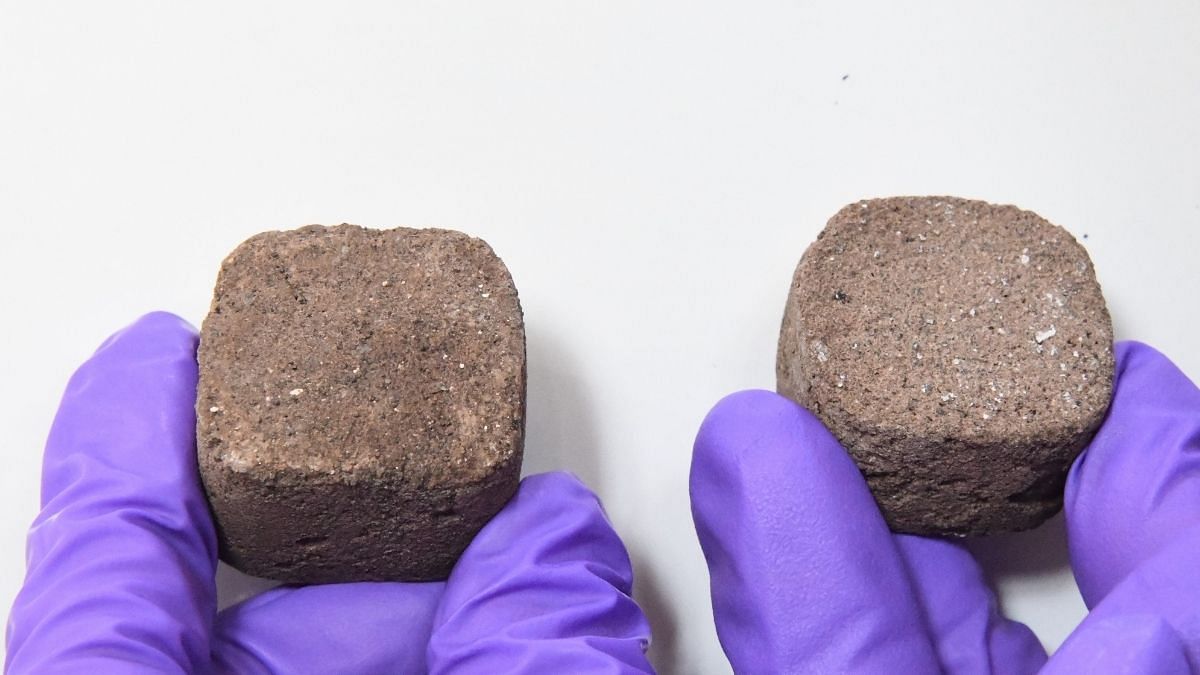
Bengaluru: A team of researchers from the Indian Institute of Science (IISc), Bengaluru has collaborated with the Indian Space Research Organisation (ISRO) to develop a prototype for bricks made of Martian and lunar soil, using bacteria, nickel chloride, guar gum, and urea.
The new method demonstrates a proof of concept for a sustainable way to build bricks for construction in situ, on Mars and the Moon, using available soil known as regolith. The research was published on 14 April in the journal PLOS One.
For Martian soil, the study was performed on a standard material that simulates this for research, called Mars soil simulant, procured from Florida. For the moon’s soil, a lunar soil simulant was used, manufactured by ISRO.
The mixture for the brick is a slurry made out of the respective soil simulant and guar gum, a fibre extracted from the guar bean that’s native to the Indian subcontinent. This gum and nickel chloride were mixed along with the bacterium Sporosarcina pasteurii to increase the strength of these biologically grown bricks.
The advantage of the new method is reduced porosity of the bricks, said a press release from IISc, which is achieved by bacteria seeping into pores and binding the brick together with mineralised proteins.
Research into extraterrestrial soil’s properties and abilities has been steadily increasing. It was previously discovered that Martian soil is capable of compacting sturdily under high pressure to form strong bricks. The IISc research team has previously performed similar experiments on lunar soil simulates, but managed to create mouldable bricks for the first time only now.
Also read: NASA gives ‘front-row view’ of Perseverance dangling, then landing & audio from Mars
Microbial induced calcite precipitation
Biomineralisation is the process by which a living organism produces minerals metabolically, such as shells, bone, teeth, and other harder structures. This is the process that has been utilised to strengthen the brick prototypes.
Microbial-induced calcite precipitation or MICP is a biomineralisation process that results in the production of calcium carbonate by bacteria. In experimental setups, favourable environmental conditions are provided by controlled chemical reactions; in this case, breakdown of urea in the presence of water.
This process is enhanced by varying the concentration of nickel ions in the reaction, the team found.
The result of biomineralisation increases the structural strength and durability of bricks made out of both kinds of soil.
Translating their previous lunar brick method to Mars soil simulant proved challenging as Martian soil is rich in iron oxide, which prevented the bacteria from growing. The addition of nickel chloride solved the problem, explained the authors in the accompanying press statement.
Also read: Why the quest for life on Mars continues despite 35 failed missions since the 1960s
Binding agents for bricks
On Earth, bricks need to be held together by binding agents. While research has shown that Martian soil can be compressed relatively easily, the case is not so with lunar soil.
Guar gum has been studied as a binder for construction material in the past because of its strong ability to bond to soil particles. The researchers found that with both soil simulants, the compressive strength of the material was increased with both nickel chloride, as well as with guar gum.
The researchers also observed that adding nickel improved the performance of the brick, irrespective of guar gum addition.
The team now plans to analyse the effects of the Martian atmosphere and low gravity on the bricks, and how the bacteria grow in such conditions.
(Edited by Manoj Ramachandran)
Also read: India’s private space sector is rising, but wait for Bezos-like ‘joy rides’ will be longer
Source: The Print

